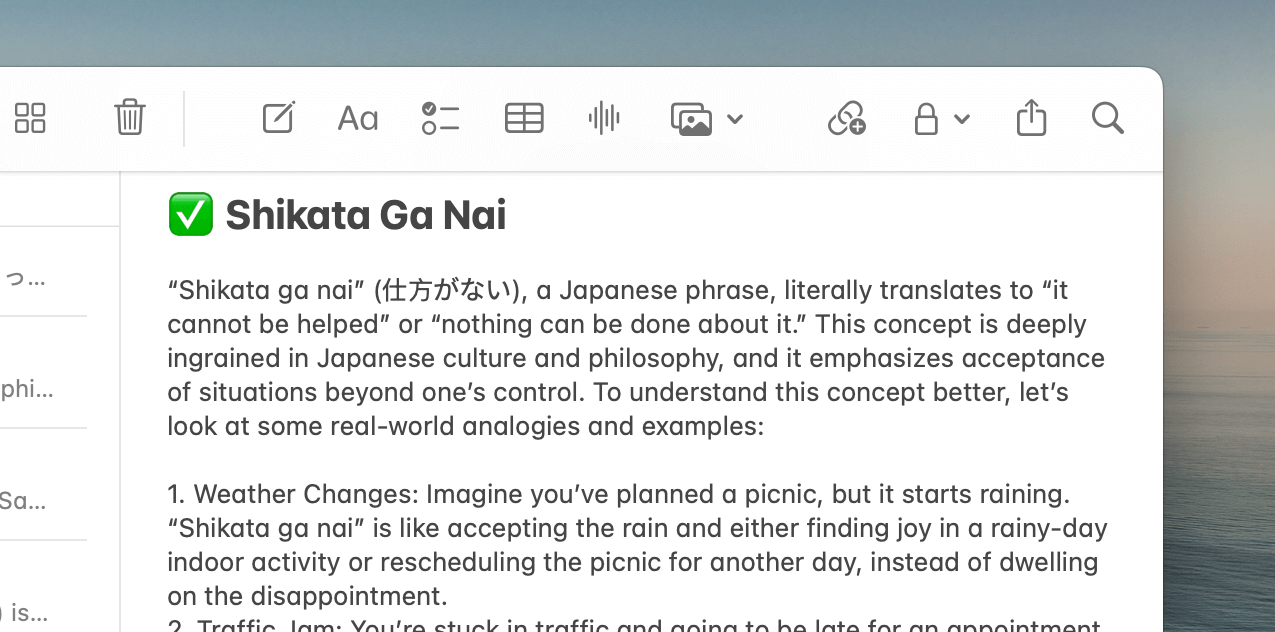At the start of this year, I embarked on a three-month effort to visualise, draft, typeset, and publish my first book, Kokoro.
Although I've been writing for over a decade and have written hundreds of blog posts, writing a book was a different ballgame.
Transforming a hazy idea into a 180-page book that anyone can read and get value from required immense patience, hard work, and time management.
In this blog post, I'll share my entire bookwriting journey from idea to finish and discuss project management tips that work beyond creative projects like writing books.
Stick around till the end for an actionable plan that you can use to break your boldest goals into achievable projects, as I did.
Let's start by:
Landing on the idea
I got the idea of writing a book on Japanese philosophies out of the blue one afternoon in mid-2023.
Maybe the idea was always there inside me because I've wanted to write a book for years, and after learning and applying many Japanese philosophies to my daily life, it all made sense.
This idea was the perfect intersection of my desire to write a book and my urge to share more of what I've learned over the years from Japanese culture with others.
Instead of picking one or two philosophies, like Wabi Sabi or Ichigo Ichie, and inflating an entire book on them, I decided to create a collection of Japanese philosophies that would be helpful to many in their daily lives.
Each chapter would explain one distinct philosophy or concept with real examples from my life or the people around me. No abstract explanations. Every chapter would be practical and easy to understand.
I wanted a book like this when I started learning about these philosophies. I wanted to learn timeless wisdom from Japanese culture without having to read a book full of filler material.
I was at an advantage because I would self-publish this book and would not have to chase a target page count set by a publisher. The book would be as long as needed, not a page more.
After getting the initial idea, I started to flesh it out further.
I created a blank note on my notes app and captured my initial thoughts: 50 philosophies to cover, short chapters, finishing in two to three months, and pricing it at $10–20 per copy.
My abstract idea of “I want to write a book on Japanese philosophies” has now become a realistic project I could work on. I knew what I wanted to write, how I would do it, and when I could expect this project to be finished.
So, with the overall idea established, I turned to:
Preparing and researching the philosophies further
I had already been aware of and practising several Japanese philosophies, such as Wabi Sabi, Chisoku, Mitate, and Ichigo Ichie, in my everyday life and actions for years.
But, as part of writing this book, I wanted to expand my knowledge and learn and apply more such philosophies before I start writing, which wouldn't be for at least another 6–7 months.
So, at first, I jotted down the philosophies and concepts I already knew and have benefited from so far into separate notes:

They made around half of the book.
Then, as I read and explored more new philosophies, I added them to this list if they made sense to apply in my day-to-day actions.
In each note, I clipped as many diverse viewpoints as I encountered via various blog posts, research papers and videos filed under the relevant philosophy. These notes helped me understand the philosophy from a varied perspective and experiment with it better.
After doing this for a few months, I gathered around 40 promising philosophies — some of which I've been practising for years, some new to me.
To be thorough and accurate, I took this research opportunity to revisit some of the old philosophies I had learned years ago.
During these relearning sessions, some of the philosophies and concepts I thought I knew well exposed a more complex side I hadn't comprehended 2–3 years earlier.
It was a fantastic experience because not only was I in a better position to write the book, but I also recalibrated some of my go-to principles with this newfound knowledge.
Now, as I experimented with each philosophy or concept and tried them in my life, I added my observations at the end of each note:

Here, I connected the idea with actual events from my life or the people around me and thought of actions where I could practice this idea.
This was crucial because I wanted to write each chapter from experience and not loosely summarise what I had found in a book or over the internet. Each chapter had to show that the philosophy can be practically applied to an individual's life, as I've done so myself.
Now, I had initially planned to include around 50 philosophies in the book — an arbitrary number I threw on my note at the time.
However, after my research and experimentation phase, I was down to 40 philosophies that made the first cut.
There was still a problem, though. While helpful, some philosophies overlapped with others on the list. They discussed the same idea under different names.



 In-depth articles, series and guides
In-depth articles, series and guides
